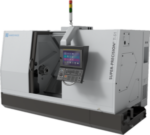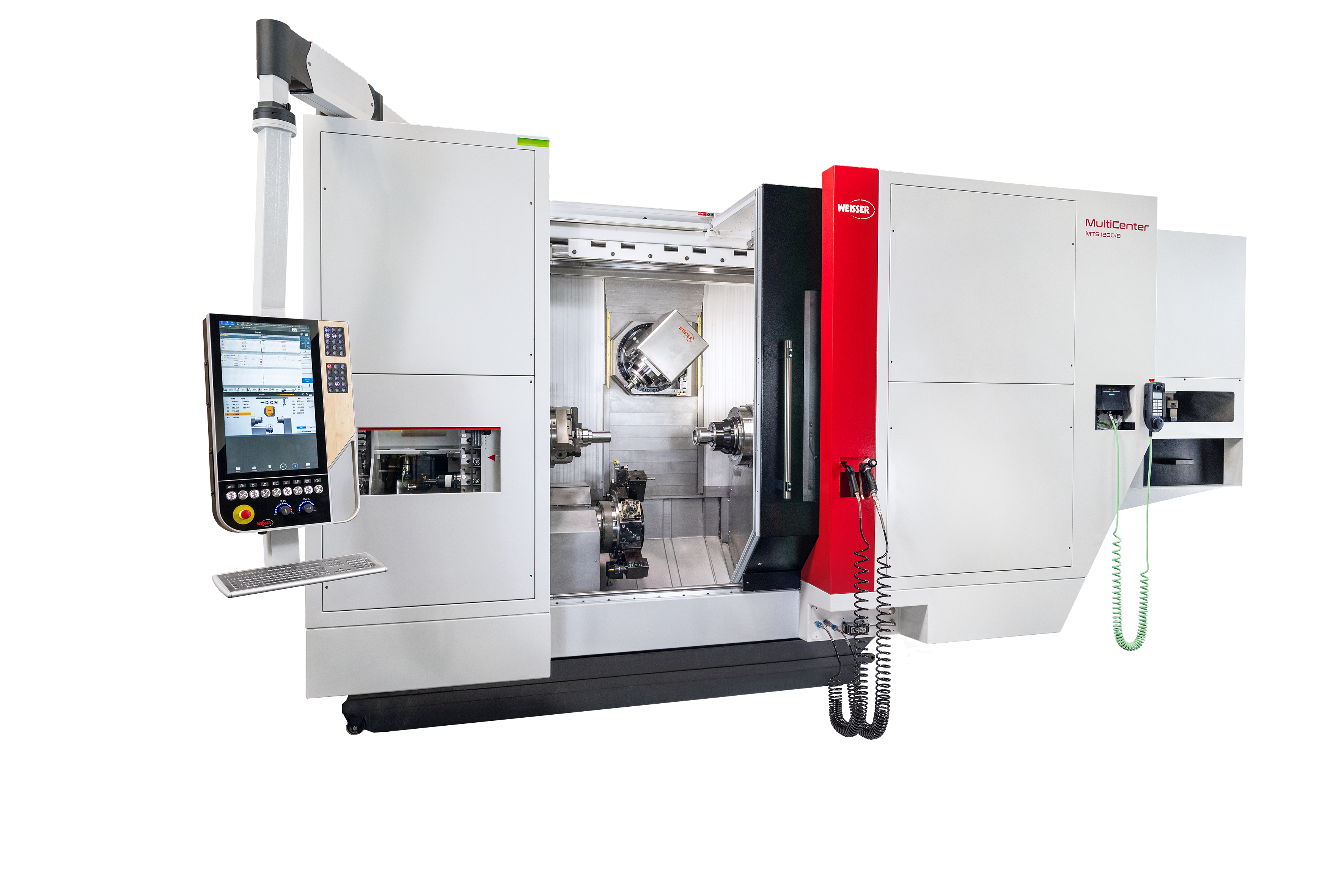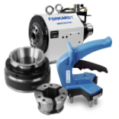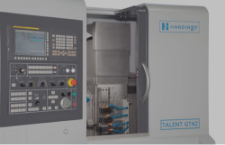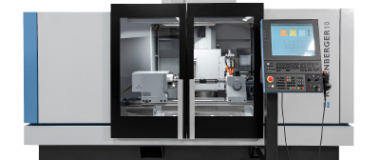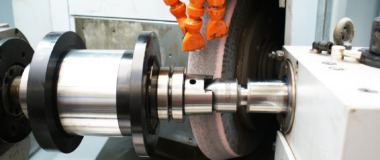What began with the machining of hydraulic parts now encompasses all relevant industries such as medical technology or aerospace, both of which place extreme demands on precision. At Wankmüller Präzisionsmechanik, precision takes precedence in turning and milling operations as well as in cylindrical grinding. In this field, they put their trust in the excellent quality of the KELLENBERGER 100 universal cylindrical grinding machine.
Right from the start in 1974, company founder Reiner Wankmüller focused on the production of hydraulic parts. He put the emphasis not only on machining processes that were important for these parts such as turning and milling, but on the competence across the entire process chain. This included grinding and honing as well as various types of surface finishing.
With Tobias Wankmüller, the third generation is now responsible for today’s 25 employees, who work 2 or 3 shifts, according to need. The special feature here: the employees organize their work independently. “In our company, personal responsibility is very highly valued. My employees don’t need instructions. Here, everyone knows what needs to be done and when,” Tobias Wankmüller explains the unusual operational management, which perhaps works so well because he trained 80% of the employees himself. Wankmüller’s first apprentice from 1995, master machinist Frederic Stantscheff, is now production manager.
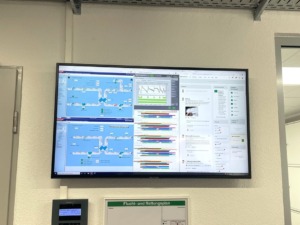
A screen in the entrance to the production hall vividly shows, how the perfect organization within the company works
The customer spectrum now ranges from hydraulics and pneumatics, mechanical engineering, tool making, special machinery and electrical engineering to medical technology, aerospace, and motor sports. Tobias Wankmüller is familiar with the latter industry through the racing career of his son Luke, who achieved impressive sporting success for many years in kart races and then in the DTM. “The variety of parts has increased,” says Tobias Wankmüller. “In particular, new, smaller, almost filigree parts are now coming from medical technology. On the other hand, we have 5-axis machines that are specially designed for machining very large parts up to 1,000 mm in diameter, up to 3,000 mm in length and weighing up to about 2 t. And we still offer all machining operations across the entire process chain, including wire EDM since 2020 and long turning for very small milled parts starting in 2023.”
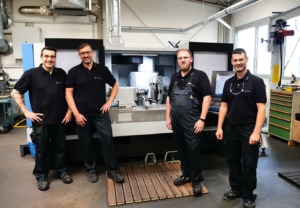
The KELLENBERGER 100 enthuses the boss and the whole grinding team: Frederic Stantscheff, Tobias Wankmüller, Benjamin Kuhles and Ben David (from left to right)
Programming in the turning and milling area is done with the SolidCAM software solution, which masters even the most complex machining processes. Only simple parts are programmed directly on the machine. The situation is different in grinding. Until recently, mainly conventional grinding machines were used there, with only one exception. At present, Wankmüller mainly grinds small series and prototypes. However, the surface accuracy of less than 2 µm required by many industries can only be achieved conventionally with great effort. The need for a powerful CNC grinding machine was therefore there.
During the pandemic, which has brought many companies to the brink, Tobias Wankmüller decided to purchase a universal cylindrical grinding machine. Besides Kellenberger, a market competitor was on the wish list, which was slightly favored at the beginning. Tobias Wankmüller explains: “We looked at both machines and were immediately impressed by the high quality of the Kellenberger machine. Starting with the look and feel, everything about the machine is of high quality, stainless steel everywhere instead of painted sheet metal, even the Piranha nozzles are made of steel. And the working area is very spacious and well-structured.” This is no coincidence, because the machine concept of the KELLENBERGER 100 was developed according to quality aspects and optimized with the cooperation of the service department. All elements relevant to maintenance are easily accessible at the rear of the machine. In case of service, a faster maintenance and service procedure is ensured, which is a real plus.
Due to the pandemic, the grinding trials in St. Gallen in November 2020 were carried out without the Wankmüller team and presented online. “That also worked out great,” says Tobias Wankmüller. “From the first grinding test on we were enthused. The execution on the part of Kellenberger was super professional and the grinded workpiece was perfect.” The decision was made in favor of the KELLENBERGER 100. In spring 2021 a machine with a center length of 1000 mm (600 mm would be optional) and a center width of 200 mm was ordered. “The all-round package was simply right,” says Tobias Wankmüller. “On delivery, all the parts required for operation, such as centers, dresser and wheel change for the crane, were supplied in an extra package, so we were able to start right away. Three of our team then went to St. Gallen for training and received excellent support.”
Benjamin Kuhles, who has been in charge of the grinding department since 2019, was one of the three. He is a trained milling machine operator with a focus on grinding and was formerly an apprentice at Wankmüller, too. He is also very taken with the KELLENBERGER 100, with the good accessibility to the large, well-structured workspace, but above all with the high quality of the ground workpieces. “The machine has opened up a new variety of parts for us and the machining options are simply great. Even shoulder grinding, be it at an angle, on complex workpieces is completely unproblematic,” says Kuhles. He programs directly at the machine on the state-of-the-art Fanuc 31i control with 19″ touchscreen, via the workpiece-related graphical Kellenberger software RED Solution.
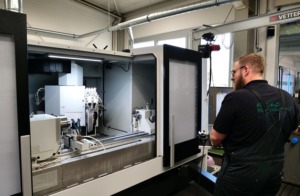
For Benjamin Kuhles, only one wish remains open. He would like to perform jig grinding on the KELLENBERGER 100.
The KELLENBERGER 100 was designed for workpiece weights up to 150 kg. The machine offers a wide range of configuration options for the most diverse grinding operations and thus enables a strong customer orientation. A new assembly concept and optimized production of the machine bring a reduction in throughput time and consequently a very good price/performance ratio. The high drive power of the grinding wheel ensures increased productivity, while the newly developed Z-guide ensures high profile accuracy. The C-axis with direct drive brings higher accuracy even for non-circular grinding.
The technical highlights of the KELLENBERGER 100 include an innovative compact grinding head (10 grinding head variants, 11.5 kW drive power, a 500 mm grinding wheel, up to 63 m/s, HF spindles for internal grinding, incl. diagonal and tandem set-up), a collision-free universal head with three tool positions and one measuring position, as well as a new measuring probe arrangement without swivel mechanism for increased measuring accuracy.
Two tailstocks are available: a standard tailstock, up to 100 kg, and a reinforced tailstock version, up to 150 kg. A synchronous tailstock with automatic fine adjustment is optionally available. This allows complete machining of shafts without drivers, so that a workpiece can be completely machined over its entire length.
Wankmüller’s grinding department is located in a separate section of the hall. There, as in the entire company, a powerful air conditioning and exhaust air system with cross heat exchanger and heat recovery ensures a stable environment, which is particularly important for grinding operations. The KELLENBERGER 100 is robust and requires little maintenance, as Tobias Wankmüller emphasizes: “We had exactly one service case in the first year. The technician was at our premises two days after we reported the problem. Within less than two hours, the fault had been rectified. The Kellenberger service is outstandingly good: our e-mails to the service department are answered immediately. And as I said, if you need a repairman, he’s there quickly.” Good service coverage is a priority at Kellenberger and is indeed also a matter of manpower. The Kellenberger service in Germany has eight service employees, three of them in southern Germany alone.
One wish of Benjamin Kuhles still remains open: the possibility of jig grinding on the machine. Wankmüller already has a number of applications for this. With Hauser, one of the few brands worldwide that is active in the field of complex jig grinding, Kellenberger has the expertise in jig grinding available in-house. The Kellenberger engineers in the Customized Special Design department could therefore take on the task. And as a consequence, another Kellenberger machine might then go into service at Wankmüller.

